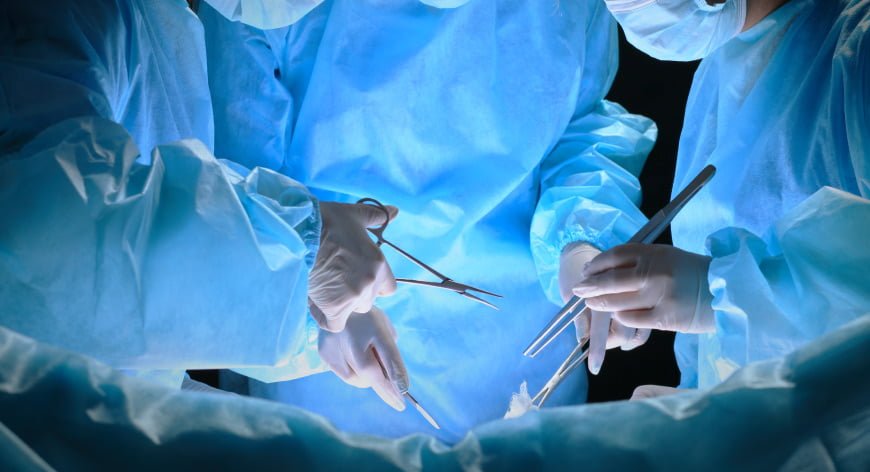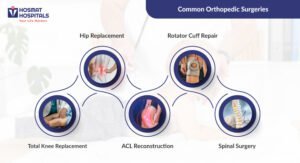
When it comes to maintaining our body’s mobility and ensuring that we can continue doing the activities we love, our musculoskeletal system plays a pivotal role. Unfortunately, this system, comprising bones, muscles, cartilage, tendons, ligaments, and other tissues, is not immune to damage. Whether due to ageing, injury, or disease, there comes a time when some of us might require orthopedic surgeries to restore function, alleviate pain, and improve our quality of life.
In this comprehensive guide, we will dive into the most common orthopedic surgeries, shedding light on what each procedure entails and what patients can expect before, during, and after surgery. Whether you’re someone grappling with an orthopedic issue, a caregiver, or simply someone interested in learning more about the field, this article aims to provide valuable insights into the realm of orthopedic treatments.
Understanding Orthopedic Surgeries
Before we delve into the specifics of each surgery, let’s briefly cover what orthopedic surgery is. In simple terms, orthopedic surgery focuses on conditions involving the musculoskeletal system. Orthopedic surgeons use both non-surgical and surgical methods to treat musculoskeletal trauma, sports injuries, spine diseases, degenerative diseases, infections, tumors, and congenital disorders.
5 Most Common Orthopedic Surgeries
1. Total Knee Replacement
Total knee replacement surgery is one of the most common orthopedic surgeries performed. This procedure involves removing damaged bone and cartilage from the knee and replacing it with artificial components made of metal alloys, high-grade plastics, and polymers. It’s primarily recommended for individuals suffering from severe arthritis or significant knee injury.
What to Expect:
- Pre-surgery: Patients undergo a thorough evaluation, which may include blood tests, X-rays, and MRI scans. Preparing the home for post-surgery recovery is also crucial, such as installing safety bars and securing a comfortable recovery area.
- During Surgery: The surgery usually takes 1 to 2 hours. The surgeon makes a cut in the knee, removes damaged parts, and prepares the remaining bone for the prosthetic, ensuring a precise fit.
- Recovery: Initial recovery involves a hospital stay, followed by several weeks of physical therapy. Most people can resume light activities within 3-6 weeks and more strenuous activities after a few months.
2. Hip Replacement
Similar to knee replacement, hip replacement surgery involves replacing a damaged hip joint with an artificial implant. It’s a common solution for those with persistent pain due to arthritis or severe hip damage.
What to Expect:
- Pre-surgery: Preparation includes evaluations and home modifications for post-surgery mobility.
- During Surgery: The procedure can take several hours, during which the damaged hip joint is removed and replaced with a prosthetic implant.
- Recovery: Recovery includes a short hospital stay, followed by physical therapy. Most people return to normal activities within three to six weeks.
3. Anterior Cruciate Ligament (ACL) Reconstruction
The ACL or Acute Cruciate Ligament is a crucial ligament in the knee that can tear during sports or sudden movements. ACL reconstruction surgery is another common orthopedic surgery that replaces the torn ligament with a graft from another part of the body or a donor.
What to Expect:
- Pre-surgery: This includes physical evaluations and potentially strengthening the knee before surgery.
- During Surgery: The surgeon removes the damaged ACL and replaces it with the graft. This procedure is often done arthroscopically, involving smaller incisions and a quicker recovery time.
- Recovery: Recovery involves wearing a brace, limited activity, and physical therapy to regain strength and mobility. Full recovery can take six to nine months.
4. Rotator Cuff Repair
The rotator cuff is a group of four muscles and their tendons that work together to provide stability and mobility to the shoulder joint. Tears can occur due to injury or wear over time. Repair surgery involves reattaching the tendon to the bone.
What to Expect:
- Pre-surgery: Evaluation to determine the extent of the injury and planning the procedure.
- During Surgery: The surgery can be arthroscopic or open, depending on the tear’s severity. Surgeons use sutures to reattach the tendon to the bone.
- Recovery: Recovery includes wearing a sling, physical therapy, and gradual increases in activity. Full recovery takes several months.
5. Spinal Surgery
Spinal surgeries address various conditions, from herniated discs to spinal stenosis and deformities. Procedures can range from minimally invasive to complex surgeries like spinal fusion.
What to Expect:
- Pre-surgery: Comprehensive evaluation of spinal issues through imaging tests.
- During Surgery: The specifics vary greatly depending on the condition, but most spinal surgeries aim to relieve pressure on spinal nerves and/or stabilize the spine.
- Recovery: Recovery can include hospital stays, wearing a brace, and physical therapy. The timeline varies widely based on the surgery type and patient health.
Conclusion
Orthopedic surgeries can significantly improve the quality of life for individuals suffering from musculoskeletal issues. While the idea of undergoing surgery can be daunting, understanding what each procedure involves and what to expect can help ease anxieties and prepare patients for a successful recovery.
Remember, the recovery process is as crucial as the surgery itself. Following your surgeon’s and physical therapist’s recommendations, maintaining a positive outlook, and being patient with your body as it heals are key components to getting back on your feet.
Whether you’re considering surgery or are just curious about the field of orthopedics, we hope this guide has provided a clearer understanding of the most common orthopedic surgeries and what they entail. Armed with this knowledge, you’re better equipped to discuss options with healthcare professionals and make informed decisions about your or a loved one’s healthcare journey.
Suffering from bone or joint problems? Look no further than Hosmat Hospitals, one of the best orthopedic hospitals in Bangalore for all kinds of orthopedic surgeries. Our highly skilled and experienced surgeons utilize state-of-the-art technology for accurate diagnosis and minimally invasive surgery, ensuring a faster recovery and getting you back to an active life. Let Hosmat Hospitals be your partner in orthopedic care – contact us today to learn more.
Disclaimer: This blog is intended for educational purposes only and should not be interpreted as medical advice. For any health concerns or medical questions, please consult orthopedic doctors in Bangalore. The information provided here is not a substitute for professional medical guidance, diagnosis, or treatment. Treatment outcomes can vary significantly from patient to patient, including differences in recovery time, pain threshold, and other individual factors.


